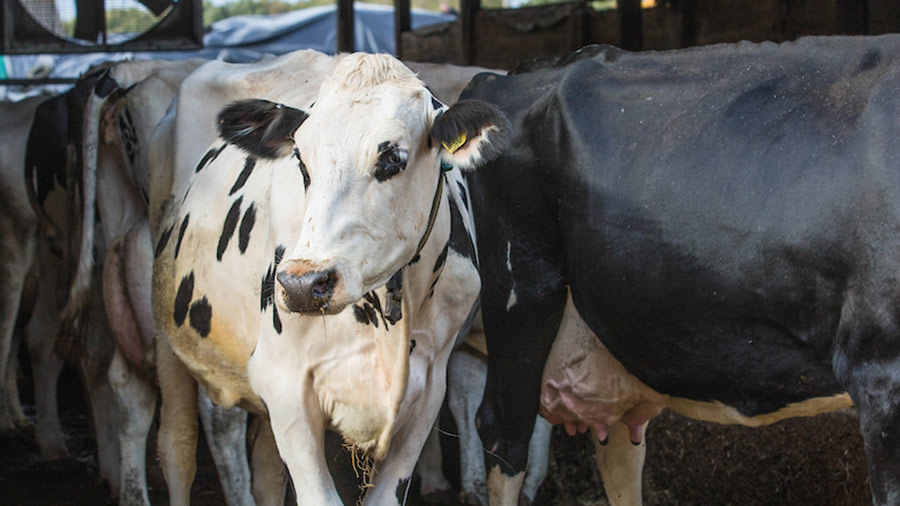Ways to reduce heat gain and promote heat loss
 © Tim Scrivener
© Tim Scrivener Monitoring cows for heat stress needs to start before the temperature humidity index kicks in, because this is a late-stage indicator, according to Dr Jennifer Van Os, assistant professor in the department of animal and dairy sciences at the University of Wisconsin-Madison.
Cows show a big range in their ability to cope with heat stress, affected by factors such as their percentage of black and white colouring, breed, social dominance and whether they are in-calf.
“The temperature humidity index (THI) is an environmental index for when cows’ responses change on average,” Jennifer says.
“Thresholds have been based on milk yield, cell count and mortality, and a figure of 72 or 68 is commonly referenced as when heat stress begins.
See also: Heat stress losses top 200 litres of milk a cow, study shows
“High-yielding cows have intrinsic coping measures that are often insufficient and, combined with the weather, they often struggle. Early intervention is best for animal welfare, but we need earlier indicators.”
Core body temperature
Jennifer says mammals need to maintain their core body temperature to be able to function properly.
She disagrees with the view that heat stress begins at the cow’s upper critical temperature and, instead, says it starts at thermal discomfort.
This is when physiological and behavioural defence mechanisms are not yet activated.
At their upper critical temperature, cows expend more heat to maintain their core body temperature.
This is why dry matter intake falls. Cows can release body heat as they produce it: they can sweat, seek shade and water, and also change body posture to dissipate heat. (Bunching is thought to be a herd response to the insects they attract as cows warm up.)
Respiration rate
Panting is an obvious visual sign, but also a late indicator of heat stress, so the target is 0%. She favours respiration rate as both practical to measure and an early indicator.
“Focus on the oldest or high-yielding cows and do a quick walk-by scan,” she says. “Focus on stationary cows lying or standing in cubicles. Watch 20-35 cows. Look to see if 25% of the cows are breathing more than 60 breaths/minute or more.
“If the answer is yes, adjust heat abatement or add more; if the answer is no, heat abatement is likely sufficient.”
The aim of any heat relief tactics is to first reduce the amount of heat the cow gains, then use fans or water to help increase heat loss.
“Shade is the basic necessity to reduce heat gain. Cows’ natural behaviour is shade seeking; they highly value shade and prefer it to being in the sun.
“They are motivated to access it,” she says, adding that promoting heat dissipation should start with fans before sprinklers.
Impact on lying time
“Lying time decreases with heat stress because when cows stand, their respiration rate and body temperature fall, and standing exposes more surface area for convective heat loss.
“Properly calibrated fans allow cows to cool down while getting enough rest.
“Soakers at the feed bunk encourage cows to stand more to get cool, and they are on wet concrete, which is a risk factor for lameness.
“We see it two months later as cows become lame. We need to design fans to promote lying times.”
Panel fans provide cooling air and encourage cows to lie down. They keep body temperature normal, protect milk yield and protect lying time.
Where finances are limited, positioning above cubicles should be prioritised.
A downward angle will create a consistent air speed across the whole lying area, with no dead zones in cubicle rows.
Fan calibration
For correct calibration, Jennifer says it is important to measure air speed at cow resting height level.
Aim for 1-2m/sec: any faster than this makes bedding fly around and energy costs rise.
She also advises erecting water misting over the feed fence, rather than in the collecting yard, to reduce standing time.
Dr Jennifer Van Os was speaking at the TotalDairy conference (6-7 November at Stratford-upon-Avon).
